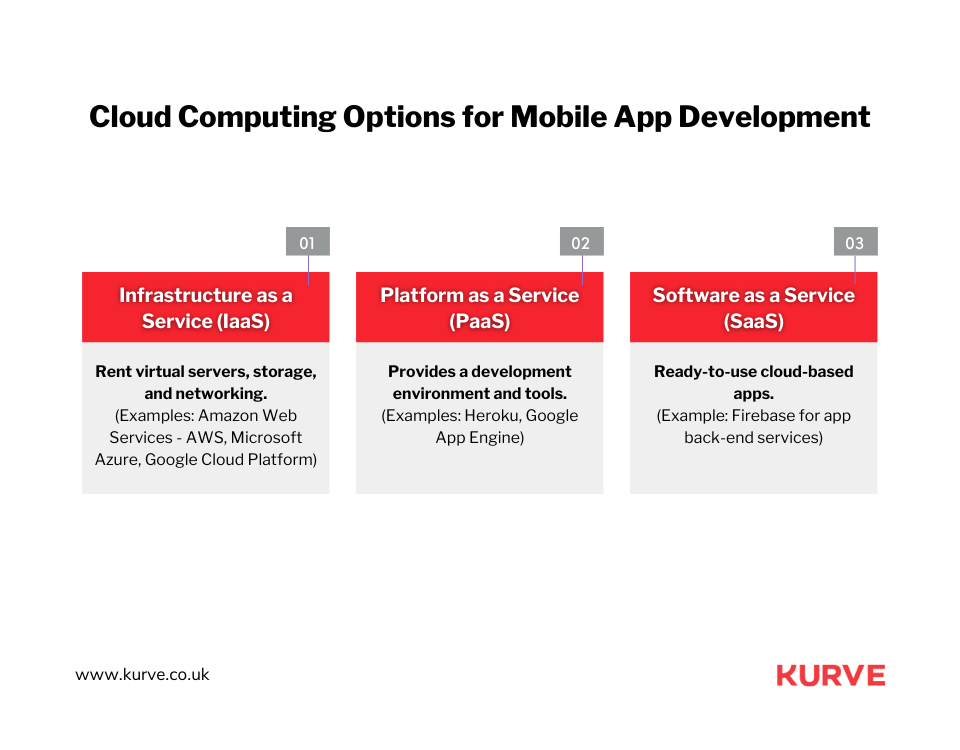15 Mobile App Development Trends To Look Out in 2024
Keeping on top of trends isn't only about staying updated as a mobile app developer.
It's about finding tangible business advantages.
Knowing where the technology is headed allows you to create more engaging, efficient, and secure apps.
This blog will explore the mobile app development trends to look out for. By leveraging these trends, you can make your mobile strategy future-proof and gain a competitive edge.
| Table of Contents |
|
Understanding Mobile App Development Importance of the Latest Mobile App Development Technologies |
Understanding Mobile App Development
Mobile apps are software applications designed for smartphones, tablets, and other mobile devices. They range from simple games and utilities to complex productivity and business tools.
Mobile apps have several core elements:
- Front-end: What the user sees and interacts with (buttons, menus, layout).
- Back-end: The server-side logic and data storage that powers the app's functionality.
- APIs: Interfaces that allow communication between the front-end and back-end, and sometimes external services.
Mobile apps have come a long way since their humble beginnings. Nowadays, they allow you to:
- Connect and socialize with friends and family.
- Shop, bank, and manage our finances.
- Get news and entertainment.
- Improve our health and fitness.
- Run businesses, collaborate with teams, and increase productivity.
Importance of the Latest Mobile App Development Technologies
Embracing emerging mobile app development technologies provides tangible benefits that influence your success.
First, consider user engagement and satisfaction. Users crave novelty and seamless experiences; cutting-edge technologies enable you to deliver these. You could use augmented reality for immersive interactions and AI to personalize content or offer intelligent chatbots.
Beyond that, a competitive advantage comes from innovation. Cutting-edge features help your app stand out. Being an early adopter of trends demonstrates a forward-thinking mindset, attracting users who value innovative experiences.
The right technologies can streamline your operations and allow your app to handle growth. — especially when supported by specialized app development services that understand evolving trends.
Top 15 Mobile App Development Trends for 2024

1. AR and VR
Augmented and virtual reality transform how we interact with the world through mobile devices. In gaming, AR overlays the real world with digital elements (like in Pokemon Go), while VR offers full immersion for unprecedented realism.
AR/VR revolutionizes education with visualized concepts, simulated field trips, and retail with virtual try-ons and immersive product demos.
Technical considerations include:
- Hardware (cameras vs. headsets)
- Software development kits
- The need for powerful processing for a smooth experience
2. AI and Machine Learning
Artificial intelligence and Machine learning are powering intelligent mobile apps that personalize experiences and streamline tasks.
AI analyzes vast user data (browsing patterns, purchase history, etc.), while ML models predict preferences. This leads to tailored recommendations, targeted promotions, and interfaces that adapt to each user. Beyond that, AI allows 24/7 chatbots for customer support and automates in-app tasks like scheduling or report generation.
AI also enables powerful features like:
- Image recognition (for photo organization or security)
- Real-time language translation for global audiences
- Natural language processing for voice assistants and intelligent search
3. Mobile Payments
Mobile payments and digital wallets prioritize convenience and security, revolutionizing how we pay.
With a tap or scan, users remove the need for cash or cards, while digital wallets store payment information alongside loyalty cards. Integrating mobile payments (Apple Pay, Google Pay, etc.) into e-commerce apps streamlines checkouts, reduces cart abandonment, and boosts sales.
The frictionless experience encourages impulse purchases and builds customer loyalty. Technologies like near-field communication, QR codes, and cloud-based processing enable these secure, efficient transactions.
Since payment methods involve sensitive user data, security is paramount. App developers must consider encryption, biometric authentication and tokenization to protect card data.
4. Low-Code/No-Code Development
Low-code, no-code platforms and progressive web apps are transforming the mobile app industry. They offer increased speed, agility, and cost-effectiveness, allowing businesses to focus on core strengths. What's the difference? Low-code offers visual interfaces for app building. No-code uses pre-built components, eliminating the need for coding.
They democratize development, empowering non-technical "citizen developers" to build apps that solve problems and reduce IT bottlenecks.
Low and no-code development use cases:
- Include streamlining internal processes
- Creating customer-facing apps
- Rapid prototyping
However, low-code/no-code isn't about replacing mobile app developers. It's about empowering everyone to innovate. Organizations embracing this trend enjoy faster development, better resource allocation, and increased problem-solving across their workforce.
5. App Security

Robust app security is a priority for business decisions. Mobile apps handle sensitive user data (personal details, financial info, etc.), and breaches damage trust, invite legal trouble, and harm your brand. This is why continued, proactive data protection and privacy are ethical imperatives.
Mobile application development for app security involves:
- Secure coding
- Encryption
- Strong authentication
- Penetration testing
App hardening to prevent common threats like malware, interception, and reverse engineering.
6. Internet of Things (IoT)
Mobile app development services integrated with IoT devices create intelligent systems with wide-ranging applications. IoT is found in smart homes, apps control lights, thermostats, and appliances, offering monitoring, automation, and energy insights. The booming market is estimated at over $300 billion.
IoT wearables track health data, enabling personalized recommendations and remote healthcare. Environmental sensors feed into mobile apps, providing insights for conservation efforts.
However, IoT development faces challenges. These include device compatibility, security (strong authentication and encryption are vital), and scalability for increasing data volumes.
7. Wearable Devices
Wearable technology is booming, and apps tailored to these devices are crucial. They drive the health and fitness revolution, with apps analyzing data from smartwatches and trackers to offer personalized workout plans and progress tracking.
Wearables offer subtle, filtered notifications, freeing users from constantly checking their phones.
Development for wearables considers many factors, including:
- Small screens (clear UI, simple gestures)
- Battery life (efficient apps, smart use of sensors)
The continuous data wearables collect allows apps to offer powerful insights on sleep, health risks, and workout effectiveness. However, you must handle this sensitive data ethically; user consent and strong security are necessary.
8. Mobile Commerce
Mobile commerce is revolutionizing retail. The widespread use of smartphones, personalized experiences powered by AI, and stores optimized for mobile drive this trend.
Success hinges on:
- User-friendly design, like intuitive navigation, one-click checkout
- Secure payment options, like PayPal or Apple Pay, to build trust
AR takes mobile commerce further. It offers virtual try-ons of clothes or makeup, lets users preview furniture in their homes, and provides interactive product demos.
Mobile commerce isn't just a smaller version of the in-store experience. By prioritizing mobile design and security and leveraging AR, businesses create convenient, personalized shopping experiences that can surpass traditional retail.
9. Cloud Computing

Cloud computing offers on-demand computing resources, revolutionizing mobile app development. Cloud services are scalable, meaning they can instantly match your app's needs during traffic spikes, eliminating costly on-site infrastructure. The mobile cloud market is expected to grow at a CAGR of 25.28% through 2028.
This flexibility improves performance, with faster load times due to global networks, and ensures high reliability with minimal downtime.
Choosing the right service is key. Options include;
- Infrastructure as a Service (IaaS): Rent virtual servers, storage, and networking. (Examples: Amazon Web Services - AWS, Microsoft Azure, Google Cloud Platform)
- Platform as a Service (PaaS): Provides a development environment and tools. (Examples: Heroku, Google App Engine)
- Software as a Service (SaaS): Ready-to-use cloud-based apps. (Example: Firebase for app back-end services)
Always consider security (encryption, compliance), cost (budget), and potential vendor lock-in (evaluate your future flexibility).
10. Voice Interfaces
Voice recognition technology is transforming how we interact with mobile apps. Voice search offers a faster, more natural way to find information within apps, especially in hands-free situations.
Voice interfaces enhance app experiences with convenience, accessibility, and innovation. Integrating voice features that fit the app's purpose unlocks new ways for users to interact, broadening the app's appeal.
Voice commands allow users to control app functions and are a boon for accessibility, empowering those with visual or motor difficulties.
Smart assistants (e.g., Siri and Alexa) integrated into apps broaden their use cases. Navigation apps use voice directions for safer driving, while messaging apps use dictation for quick, convenient communication.
11. Cross-Platform Development
Cross-platform development offers a solution to the time and cost of building separate native apps for iOS and Android. It allows a single codebase to run on both platforms, speeding development and reducing costs. This lets you reach a wider audience faster.
There's often a trade-off between performance and convenience. Native apps generally offer the best user experience, but cross-platform frameworks are getting closer. Modern tools like React Native and Flutter offer excellent performance and flexibility.
Consider cross-platform for tight budgets, quicker time to market, simpler apps, or a consistent look across Android and iOS.
12. On-Demand Apps
On-demand apps are booming, fulfilling our need for instant, convenient services. They've transformed industries like food delivery (UberEats), transportation (Lyft), home services, and healthcare.
Current developments for on-demand apps have included:
- Real-time tracking
- Seamless in-app payments
- User ratings for trust
- Reliable customer support
On-demand apps tap into our desire for instant gratification. User experience (UX) must make the experience easy, personalized, and fast – to drive loyalty in this competitive market. This could mean intuitive navigation, personalization, and speed-matching between users and providers.
13. Blockchain
Blockchain, known for cryptocurrencies, offers security and transparency that can revolutionize mobile apps. Its decentralized nature and immutable records enhance security and reduce fraud risks. It comes with transparency; every transaction is trackable on the distributed ledger.
Beyond cryptocurrency, blockchain enables:
- Secure data sharing (for medical records supply chains)
- Smart contracts that automate processes
- Digital identity solutions that boost user control
However, current challenges for blockchain development include complexity, potential scalability issues, and the energy consumption of some implementations. Designing intuitive interfaces is key to a good user experience.
14. 5G Technology
5G's blazing speeds and low latency have transformed mobile app development. Seamless HD video streaming and cloud-based gaming with console-like responsiveness are now possible. AR experiences become more immersive, with real-time overlays and multiplayer capabilities.
It opens new frontiers in healthcare (remote surgery), industrial automation (precise real-time control), and immersive, untethered VR.
To leverage 5G, apps must be optimized for high-quality media, mindful of data usage, and be designed to take advantage of real-time capabilities.
15. Foldable Devices
Foldable devices challenge traditional app design, requiring adaptation to multiple screen states. Apps must adjust their layouts when devices fold or unfold, ensuring a smooth experience as content moves between screens.
Developing apps optimized for foldable devices involves many points:
- Varying aspect ratios
- Testing across different foldable models
- Leveraging unique features like hinge sensors
However, the payoff is immense. Larger unfolded screens boost productivity with multitasking, offer immersive media experiences, and open new interaction modes.
Elevate Your App Game with Kurve
The mobile app development industry is constantly evolving.
The technologies and trends we've explored today are just the beginning. By staying ahead of the curve and embracing innovation, you can create apps that meet user needs and redefine what's possible.
Ready to discuss how to bring these mobile app trends into your app? Let us know how Kurve can help you!
You can also check out our blog for more resources on mobile app marketing and more.


